First Laser Bombs Bust the Dragon's Jaw
The first use of laser-guided bombs changed aerial warfare forever when they finally brought down the Dragon’s Jaw, a critical North Vietnamese bridge that had cost a dozen American aircraft during the Vietnam War.
Editor’s Note: Stephen Coonts is a Vietnam veteran and the author of over 40 books of fiction and non-fiction including the bestselling Flight of the Intruder. Barrett Tillman has also authored over 40 books, mostly on naval and aviation topics, including On Yankee Station. Recently they co-authored Dragon’s Jaw: An Epic Story of Courage and Tenacity in Vietnam, from which this essay was adapted. It tells the history of American aviation in Vietnam and dramatic efforts to stop supplies flowing from the north over the Thanh Hoa bridge.

Every war has its “bridge” — the Old North Bridge at Concord, Burnside’s Bridge at Antietam, the railway bridge over Burma’s River Kwai, the bridge over Germany’s Rhine at Remagen, and Korea’s bridges at Toko Ri. In Vietnam it was the bridge at Thanh Hoa, called the “Dragon’s Jaw,” a strategically important bridge south of Hanoi that carried enormous quantities of men and military equipment over the Song Ma River toward the south.
From 1965 to 1972, hundreds of US airmen flew sortie after sortie against the Dragon’s Jaw, dodging heavy concentrations of anti-aircraft fire, surface-to-air missiles, and enemy fighters. Many American fliers were shot down, killed, or captured and taken to the infamous POW prisons in Hanoi. But after each air attack, when the smoke cleared and the debris settled, the formidably built bridge stubbornly remained standing. For the North Vietnamese, it became a symbol of their invincibility; for US war planners, an obsession; for US airmen, a testament to American mettle and valor.
The dream was ancient: sky-borne gods who would fling unerring thunderbolts earthward to punish or destroy evil doers.
It would also become a symbol of the ingenuity of American engineers, who would develop the first laser-guided bombs to take out the notorious bridge, forever changing aerial warfare.
The dream was ancient: sky-borne gods who would fling unerring thunderbolts earthward to punish or destroy evil doers. During World War II cities were pounded into oblivion by masses of “dumb bombs” raining down. But precision targeting was largely beyond reach. American and German engineers were able to produce a small number of experimental television- and radio-controlled weapons that could strike with impressive accuracy . . . some of the time. The Luftwaffe successfully deployed radio-guided ordnance that could strike – and sink – targets the size of battleships.
After World War II, precision-guided weapons continued to be more a theory or dream than a reality. But in 1965, a quiet revolution was underway near Dallas, Texas thanks to an engineer named Weldon Word who led a small development team at Texas Instruments (TI). He reversed the conventional wisdom: rather than employing lasers as weapons (Jules Verne and H. G. Wells had dreamed of “death rays”), why not use them to guide weapons onto pinpoint targets?
Like radar (Radio Detection And Ranging), “laser” is an acronym for “Light Amplification by Stimulated Emission of Radiation.” Albert Einstein had envisioned something similar in 1917, but it took until 1960 when Hughes Research Laboratory in California produced the first operating laser. Experimentation suggested a variety of uses.
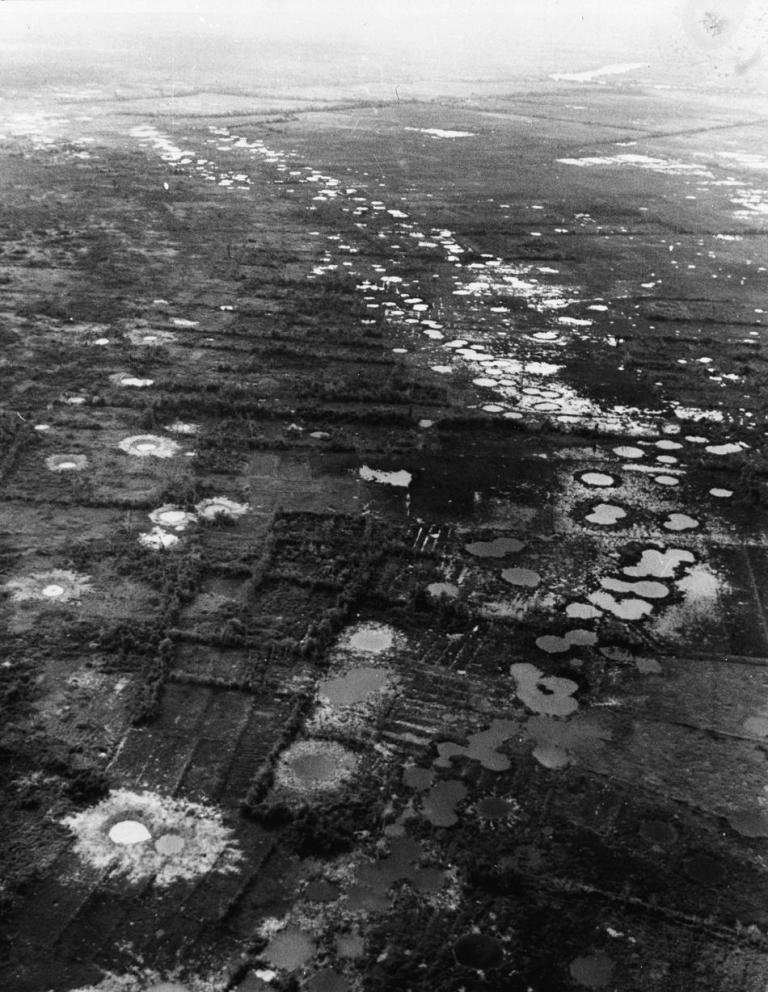
Because they operate on a single frequency, lasers are small, tightly focused beams that retain their dimensions at extreme distances. Consequently, the “standoff” capability that a laser-aiming device would give aircrews seemed promising. Combat aircrews could launch their weapons from distances previously undreamed of, all the while staying safely outside of the range of many of the enemy’s defenses.
In bombing, the measure of accuracy is the circular error of probability (CEP), the distance from the aim point within which half the ordnance will strike. Not all . . . half. During World War II the Army Air Force strove for a thousand-foot CEP in level bombing—which was a goal more than an achievement. Yet even in the early 1960s there was little reason for optimism. Circa 1965, fighter-bomber pilots typically scored a CEP of 750 feet in combat. As one survey concluded, “It was sufficient for the impact of a tactical nuclear weapon but is far from adequate for conventional weaponry.”
During Rolling Thunder in the Vietnam War, from 1965 to 1968, F-105s typically scored 5.5 percent direct hits, with a CEP of 450 feet. Later, technique and equipment cut the previous CEP in half, to a still unsatisfying 365 feet. Photo interpreters counting bomb craters and measuring distances derived the numbers.
Word reversed the conventional wisdom: rather than employing lasers as weapons, why not use them to guide weapons onto pinpoint targets?
Before you decide that combat aviators were incompetent dive bombers, remember that attacking bombers dropped their dumb bombs in a string, or “train.” The mil setting the pilot put into the bombsight was a number derived for the middle bomb in the string, or if an even number of bombs were dropped in one pass, the average of all of them. If one bomb in the string was a bull’s-eye, all the others in the string missed by varying distances. The average miss distance of all the bombs in the string, divided by two, was the CEP, or the distance from the target at which half the bombs fell inside.
Still, any way one approached the problem, there were a lot of bomb craters scattered all over the landscape, with precious few bull’s-eyes.
By the time of the Vietnam War, the Air Force was already interested in experimenting with lasers to improve precision – or part of the Air Force, that is. Under Project 1559, the Research and Development Office sought “short term translation of technology into new or improved weapons systems.” Laser-guided bombs (LGBs) featured prominently. In 1965 Weldon Word’s supervisor had lamented the miserable accuracy of US Air Force bombing, with a thousand-foot CEP. Long afterward Word recalled, “I said, ‘Well, how about laser-guided stuff? We never built any, but we’re sure talking the hell out of it.
Thirty-four years old, Word came from a rich military background: he was a Navy brat and had served in the Army. One of his projects at TI was eighteen months on a naval-industry team perfecting antisubmarine sonars. He also contributed to the Shrike antiradar missile.
Sent to Washington to sell the brass on the idea of using lasers to aim bombs, Word found a defensive attitude among the generals. “They took great offense at our ‘Buck Rogers’ idea,” he said. “[But] you have bomb-damage assessment photos with 800 craters and you ain’t hit the target yet.”
However, Word and his team found a valuable ally in Colonel Joseph Davis from Eglin Air Force Base. Eglin was the service’s weapons system development facility, and Davis’ group, Detachment Five, was interested in precision strike. After hearing Word’s presentation, Davis offered a one-time good deal: his office would support the laser-guided bomb if it could be developed in six months for less than $100,000.
Weldon Word was the right man in the right place. A better man to develop the technology couldn’t have been found.
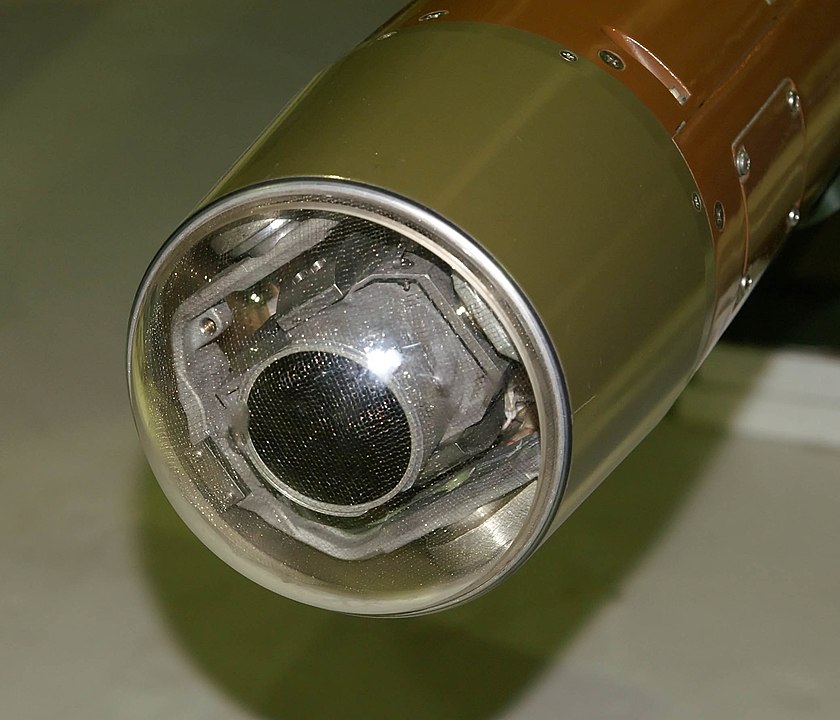
A laser-guided bomb was a binary system. It needed a projector to “illuminate” a spot for the ordnance to guide upon. With the seeker on the nose of the falling bomb detecting the reflected energy on a compatible frequency, the weapon could ride the invisible beam all the way to impact. So the attackers needed two aircraft—one to illuminate and one to drop, or launch, the weapon.
Although Texas Instruments won the nod against North American, which was also vying for a contract, limited funding put a bite on Word’s crew Even in the mid-1960s, $100,000 only covered a limited number of engineering man-hours to design a system, not to mention the cost of actually producing hardware.
An important subcontractor was Ford Aeronutronic, at the time a division of Ford Aerospace, in Newport Beach, California. They meticulously produced the high-quality lenses required for LGBs. The first six Pave Knife laser pods, weighing twelve hundred pounds each, were hand-built under the scrutiny of Reno Perotti, a widely respected optical engineer.
Scrimping wherever possible, TI bought parts off the shelf at home and abroad. When wind-tunnel testing looked too costly, Word and company-built scale models of the weapons for fluid testing in a swimming pool.
TI developed “screw-on” kits for the seeker and guidance systems to be installed on existing ordnance. The Mark 80 series of bombs, ranging from 250 to 2,000 pounds, had been developed by Douglas Aircraft in the 1950s. With a uniform aerodynamic shape regardless of weight, they provided far better ballistic properties than the previous “fat bombs” of World War II and Korea fame. The Mark 80 series were the ideal teammates for laser-guided technology. M118 3,000-pounders were fitted with guidance kits in 1969. The M118 provided 50 percent more bang than the Mark 84 and three times as much as a Mark 83.
In 1967 the LGB was dubbed Paveway, an apparently poetic choice, as the laser paved the way through the sky for the weapon. Reputedly “Pave” was an acronym for precision avionics vectoring equipment; however, industry and scientific sources state that “Pave” referred to the overall Air Force project under which LGBs were developed.
In 1967 the LGB was dubbed Paveway, an apparently poetic choice, as the laser paved the way through the sky for the weapon.
Regardless of the origin of the name, Paveway was a spectacular success, meeting contract requirements for a twenty-five-foot CEP and 80 percent guidance reliability. The weapon sold itself. The original order was for fifty seeker kits. Then, in June 1968, the Air Force paid $4.7 million for 293 more LGB kits. The airmen soon bought another thousand.
Aircrews appreciated the high prices of LGB and electro-optical bombs, the latter running $17,000 or more each, four times the cost of the initial batch of Paveways. But the unit cost of Paveways continued to drop as production increased.
A Paveway I involved three elements: a bomb, the AGM-45 Shrike antiradar missile’s control activator, and the laser seeker. The TI system included rear-mounted cruciform airfoils on the bomb for stabilization in flight and moveable canards up front to steer the weapon to its target dot of laser light.
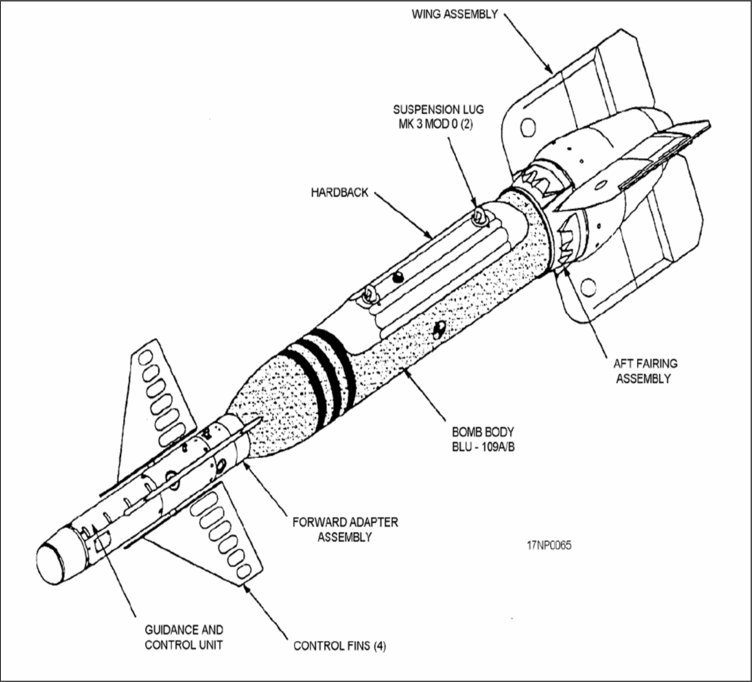
When dropped, the unpowered glide-bomb entered a laser capture area, or “basket,” from which it followed its natural trajectory earthward as it steered toward the laser dot target. The basket was the open end of a cone, with the small end on the laser dot.
In flight an LGB described a shallow sine wave toward the laser-dot target. As the dive angle changed, the weapon’s canards compensated accordingly. When the bomb’s flight path took it above the perfect trajectory, the weapon’s canards tipped down to lower the nose. If the weapon descended below the perfect trajectory, the canards rotated upward to raise the nose, as per any well-behaved aircraft. Similarly, it would adjust left or right to respond to wind drift.
However, unlike an aircraft, the canards were an all-or-nothing proposition, slamming full up or full down with no intermediate position. Fliers and ordnancemen called it a “bang-bang” arrangement—rough but effective. And it happened quickly, multiple times per second. The flipping back and forth of the canards robbed the LGB bomb of kinetic energy in its downward flight — creating more drag than a slick bomb — so it required a fairly high release altitude and a lot of airspeed to give the weapon sufficient energy to reach the target.
Too little energy imparted to the weapon when it was released meant that it would literally fall out of the cone — and miss the target. A release below ten thousand feet of altitude was almost pointless. During theater evaluation the Eighth Tactical Fighter Wing began releasing LGBs at twelve thousand feet after a 45-degree dive from twenty thousand.’
The Paveway system required a designator aircraft to lase the target. The original AVQ-9 laser designators were optical telescopes mounted in a Phantom’s rear cockpit, fixed to the left canopy frame and aimed by the backseater, the weapons system officer (WSO). Visually aiming the laser through the optic, he activated the laser beam with a trigger. The gadget, officially called Pave Light, was dubbed the “zot box” after Johnny Hart’s cartoon aardvark that liked to “zot” ants.
Although effective in clear air to ten or twelve miles, the box imposed onerous limits on the designating aircrew. Because the box was fixed to the airframe, the pilot had to fly a pylon turn around the target, presenting the AAA defenders with a predictable flight path. The WSO had to keep the target illuminated by the laser as the bombs fell, so his pilot had to fly a smooth, steady course with no evasive action that would jiggle the WSO’s aim off target. Furthermore, the back-seater could not eject with the box in place, requiring precious seconds to remove it before pulling the yellow and black handle.
Although astoundingly accurate, Paveway had serious operational limitations. Still, the pinpoint accuracy airmen had dreamed about for sixty years was finally achievable . . . on a clear day.
Clearly, the in-cockpit box was only a stopgap — the replacement was already on the way: a twelve-hundred-pound Pave Knife designator pod that was carried on one of the designator aircraft’s weapons stations. The gimbaled designator was installed on the lead aircraft in the flight, allowing the Lead to bomb and his wingmen to drop simultaneously. As long as Lead’s WSO kept the designator painting the target with laser light as the pilot maneuvered, all the bombs would take the same airy route to their destination. One pass, four bombs, and it was time to return to base for a beer at the club.
Initially twelve Pave Knife pods were manufactured, with three kept stateside for the test program. Three went to the Navy for specially wired A-6A. Intruders. The other six went to Thailand, yet two of those were lost on downed Phantoms. The remaining four were retained for use on high-priority targets only.
Although astoundingly accurate, Paveway had serious operational limitations. It was largely ineffective at night, and laser light could be scattered by smoke, rain, fog, and low clouds, diffusing the clarity of the target dot or causing a false image. Still, the pinpoint accuracy airmen had dreamed about for sixty years was finally achievable . . . on a clear day. And although clear days in Vietnam were few and far between, they did come around occasionally.
The Paveway project accelerated quickly. Initial flight testing began in April 1965 as a kit on a 750-pound M117 bomb. Field tests began in Vietnam in 1968, but opportunities were limited by Lyndon Johnson’s bombing halt that spring.
Nonetheless, that year an in-theater survey concluded that fighter-bombers armed with LGBs could destroy more than twenty times as many targets for the same number of jets dropping six M117s each. Despite the added laser-incurred expense, there was a huge difference in cost per target destroyed not only because fewer weapons were required but also because attacking aircraft suffered far fewer losses. Cost-benefit analysis . . . McNamara’s Whiz Kids must have loved that report.
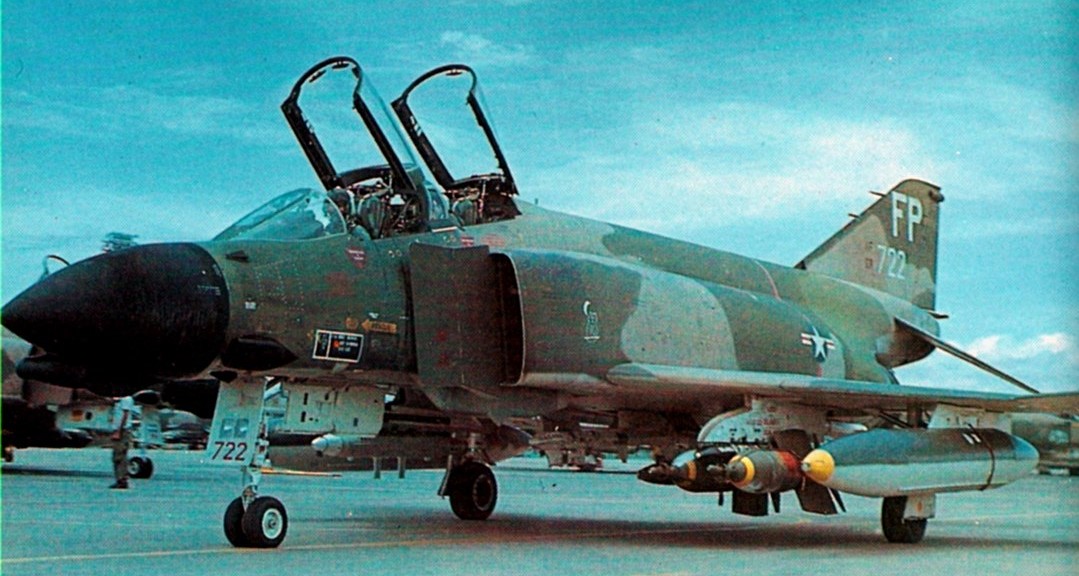
The Air Force already had another precision weapon, Rockwell’s Homing Bombing System, or HOBOS. Like the Walleye ineffectively used against the Thanh Hoa Bridge in 1967, it was an electro-optical weapon, yet it had far more punch because it was mated to a Mark 84 two-thousand-pound bomb. HOBOS had the advantage of also being a “fire and forget” weapon once the TV seeker was locked onto the target, the firing aircraft was free to maneuver and escape the target area. Deployed to Vietnam in 1969, it proved generally effective, even though it needed a high-contrast target and required modifications to the carrying aircraft. There was also the cost. A HOBOS kit cost more than $20,000 in 1972 dollars versus a Paveway I guidance kit, which cost $2,700.
Anticipating increased need if the war resumed Up North, in 1971 the Air Force authorized production of Paveway guidance pods at a rate of 920 per month, nearly half for Mark 84 bombs. Seeker kits were one thing, however, and the Pave Knife targeting pods were quite another. By April 1972, when North Vietnam launched the Easter Offensive, the large-scale invasion of the south, the new Pave Knife pods were still scarce.
The laser-guided bomb systems were soon put to use. From February 1972 to February 1973 some 10,600 LGBs were dropped in Southeast Asia, more than 90 percent being Mark 84 one-ton bombs. In medium-packed soil a Mark 84 left an impressive calling card: a crater thirteen feet deep and forty feet in diameter. LGBs were credited with a combat CEP of less than twenty-five feet, with 48 percent direct hits, and an 85 percent reliability rate. On a clear day an LGB seemed like the finger of God flicking down to smite the enemy.’
“We used to say we were dropping a Cadillac,” Colonel Dean Failor recalled. “ They were worth a Cadillac, too, because they worked."
“We used to say we were dropping a Cadillac,” Colonel Dean Failor recalled. “They were very accurate, and I guess compared to other munitions of the time [they were] cheap, but to us ‘crew dogs’ they were Cadillacs. They were worth a Cadillac, too, because they worked. We really didn’t like the electro-optical guided bombs because they didn’t always work.”
Failor described the Paveway / Pave Knife accuracy: “We took a bridge out with laser illumination. The first bomb hit the bridge, the second hit the abutment and blew that end off the bridge, the third bomb hit the middle and dropped that span in the river, and the fourth bomb hit the abutment on the other end and blew that up. When we left there was nothing but ripples in the water.”
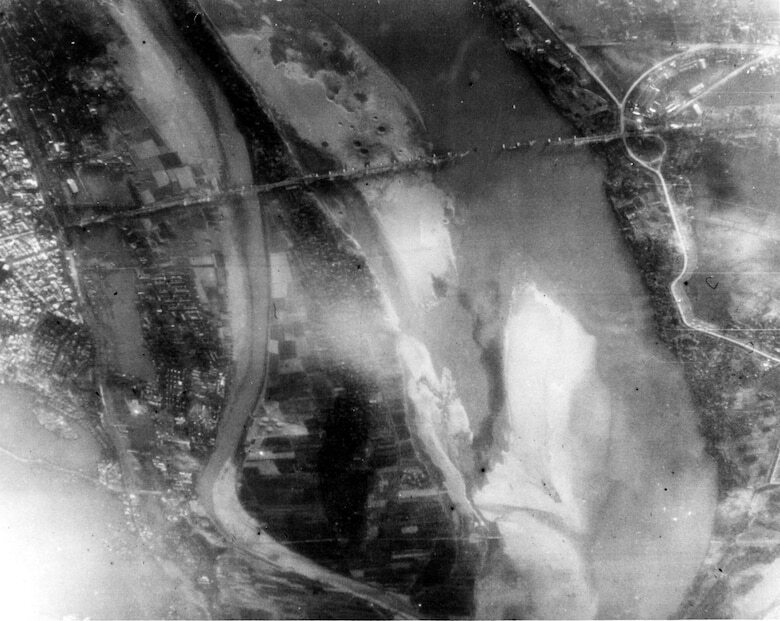
Describing pilot-WSO coordination, Failor explained, “You had to be good at what you were doing. There had to be cooperation between the guy in back and the pilot and a general understanding of how the bomb worked. Once you got that down though, it went well. When you used it properly the laser-guided bomb was so much better than a regular iron bomb that there was just no comparison. Paveways were truly precision weapons. Failor recalled pinwheeling a bulldozer along the Ho Chi Minh Trail in Laos. It had been stashed in a bomb crater, presenting a difficult angle to an attacker. One LGB destroyed it.
Paveway I was a rousing success. Texas Instruments had designed, tested, and deployed the system in an astonishingly short time, and it was extremely accurate. Combat CEPs were as little as eight feet.
To put that number in proper perspective, most “iron bombs” had a built-in error of six mils, or twenty inches of dispersion from the aim point for every thousand feet of fall. Imperfect casings and nonuniform explosive content, plus dents and dings in the bomb fins, accounted for that. An unguided dumb bomb was not a rotating sniper bullet. So the most perfectly aimed dumb bomb released in a no-wind environment from a slant range of 9, 000 feet could miss the target by 15 feet. With five hundred pounds of high explosive on a medium-hard target that was as good as a direct hit. Yet half the dumb bombs missed by more than 450 feet.
The bad news was that the Paveway had completed its combat evaluation in August 1968, well after Lyndon Johnson’s ban on bombing north of the 19th parallel that year. His subsequent prohibition on attacks anywhere in the North left Paveway all dressed up with nowhere to go. There simply were not enough worthwhile LGB targets in South Vietnam or Laos.
But that changed overnight when General Giap led his NVA army across the DMZ on March 29, 1972, the Easter Offensive. And the target number one was the railroad bridge at Thanh Hoa, or the “Dragon’s Jaw,” which carried vital supplies and reinforcements from Hanoi to the Viet Cong fighting in South Vietnam.
During the Johnson bombing halt, the Vietnamese, probably with the help of Chinese construction crews, had worked continuously to keep the vital bridge across the Song Ma open while repairing bomb damage. Between 1968 and 1972 eight concrete piers reinforced the approaches for greater resistance to explosives. The span itself still featured a one-meter-gauge railway along the twelve-foot center, with twenty-two-foot concrete roadways supported by cantilever structures on both sides. By the spring of 1972 the Dragon’s Jaw was renewed, refreshed, and well defended. It was as if the innumerable attacks from 1965 to 1968 had not occurred.
In 1972, the Dragon’s Jaw Bridge at Thanh Hoa was the most heavily defended structure on the planet. The old tactic of cruising into bad-guy country at sixteen to twenty thousand feet was history.
With the Easter Offensive going full blast, another round with the Dragon was inevitable. Some veteran fliers were reflective about the Dragon’s Jaw. One Phantom pilot on Constellation recalled, “We thought of calling Hanoi and saying we’d push three A-4s overboard if they would just blow up that damn bridge.”
In 1972, the Dragon’s Jaw Bridge at Thanh Hoa was the most heavily defended structure on the planet, surrounded by antiaircraft artillery (AAA) pieces manned by five battalions of gunners who got lots of practice. And above the envelope of the AAA were the SAMs — surface-to-air missiles. SAMs could be brutally effective and very lethal to American pilots. The only way to avoid them was to maneuver, and that would bleed off energy and drive the target aircraft down into the flak envelope, where North Vietnamese gunners could pick them off. The old tactic of cruising into bad-guy country at sixteen to twenty thousand feet was history.
On Saturday, May 13, with improved visibility, the Eighth Tactical Fighter Wing’s Wolfpack flew toward the Dragon’s Jaw. It was a complex, global mission – the sort of work at which the US Air Force excelled. As novelist and analyst Tom Clancy related, “It took everything the ordnance shop and contractor tech-reps at Ubon could put together, including some specially-built three-thousand-pound LGBs.”
Ordnance crews had armed sixteen Phantoms with nine three-thousand-pound M118 LGBs, fifteen one-ton Mark 84 LGBs, and forty-eight Mark 82 five-hundred-pound iron bombs. They also loaded all five Pave Knife laser-designator pods.
Colonel Richard G. Horne, wing director of operations, led off early that morning as the leader of Jingle Flight. Pilots ran their throttles full forward, pushing both throttles through the detent into full afterburner, and rocketed away from Ubon’s Runway 05-23 into the Siamese sky.
Eight minutes out from the Dragon’s Jaw Bridge the strike force saw that the weather was marginal. As predicted, the Tonkin weather sided with the defenders, obscuring the target, worse than predicted at briefing. So Hilton improvised, instructing his flight, “Okay, tighten it up. We’re all going in together.”
And they did just that. The four Phantoms dived through the murky air toward the bridge as the laser pods shined down their death rays. Each pilot punched off his weapons, and Hilton continued down, illuminating the bridge for the LGBs.
Then the Dragon disappeared in a succession of flashes.

A second-strike force, led by Lieutenant Colonel D. C. Vest, plunged for the bridge. Straddling the span, four dozen Mark 825 — five hundred pounds each — added their explosive power to the damage the LGBs had done. At the west end the Dragon emitted a shrieking, mournful howl as high-tensile steel warped, buckled ... and failed.
The aircrews were exultant. They knew they had delivered the Dragon a mighty blow.
Seventy-two bombs, both smart and dumb, had accomplished what thousands had previously failed to do. Consulting their bombing tables, Air Force weaponeers estimated that thirty-three times as many unguided bombs would have been required to achieve the same result. As Hilton reflected, “Twenty-nine tons of LGBs at the west end of the bridge broke it. Plus twelve tons of iron bombs. After all the years of pounding, and the lives lost, we finally broke the Dragon’s Jaw, and did so without the loss of life or airplane.”
After Vietnam the American military continued to develop smart weapons. By the end of America’s involvement in Vietnam, twenty-seven thousand PGMs (precision-guided munitions) had been released in Southeast Asia, which was two-tenths of one percent of the 3.5 million bombs expended, but the PGMs recorded an average miss distance of twenty-three feet. More than half the smart bombs were scored as direct hits — ten times the figure for conventional ordnance. They had a bull’s-eye CEP.
By the end of America’s involvement in Vietnam, twenty-seven thousand PGMs (precision-guided munitions) had been released in Southeast Asia, more than half scoring direct hits.
As a natural outgrowth of its space endeavors, America developed the global positioning system (GPS) based on satellites. Weapons designers married GPS sensors to guided missiles and free-falling bombs, and the result was ordnance with phenomenal accuracy without the necessity for daytime, clear-air delivery, thereby revolutionizing war in the air. No longer would tactical or strategic aircraft need to expend tens or hundreds of tons of conventional ordnance to destroy one target. One warhead would be enough, day or night, in any weather. And it could be launched from well outside the envelope of defending weapons; indeed, from hundreds of miles away.
The world saw the result in the 1991 Gulf War, Operation Desert Storm, which freed Kuwait, and the 2003 Iraq war that buried the Saddam Hussein regime.
After their victory, the Vietnamese Communists began rebuilding the Dragon’s Jaw Bridge at Thanh Hoa. The AAA guns and SAMs were eventually removed. Additional spans were added downstream in sub sequent years, the latest constructed by a Japanese firm.
Today these structures carry commerce north and south across the muddy Song Ma ... and the skies above them contain only the eternal clouds and mist.






